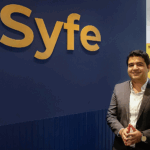Training, education and learning and collaborations intend to enhance the degree of treatment at the source degree.
The Globe Optometry Council (WCO) is escalating its worldwide initiatives to systematize nearsightedness monitoring as there are enhancing distinctions in treatment in between high- and low-resource locations.
” Some areas are atropine or biometer that reviews axial size. Actually, the objective does require to check out the proof there, using it within the extent of technique,” stated Dr. Sandra Block, WCO and Illinois College of Optometry.
To deal with these spaces, WCO has actually released an educational program that concentrates on the core competition of eye doctors, despite their nation’s accessibility to modern technology. “You might not have accessibility to biometrics or OCTs, yet you understand exactly how to utilize them and you understand exactly how to translate them,” Dr. Brock informed Ashealticare Asia at the 2025 Asia-Pacific Nearsightedness Administration Seminar in Hong Kong in 2025.
In spite of the expanding appeal of sophisticated modern technologies like AI, WCO stresses that medical judgment stays the foundation of nearsightedness treatment. “AI is simply a device. Modern technology is a device to do much better. Actually, medical professionals and their expertise and know-how choose regarding whether to give nearsightedness monitoring and suitable treatments.”
WCO likewise functions to increase its company collaborations to increase its reach, particularly in the Asia-Pacific area. “Our objective is truly to increase our companions within the nearsightedness array … so our objective is to really increase our expertise and recognition of nearsightedness monitoring much past what we are currently,” she stated.








